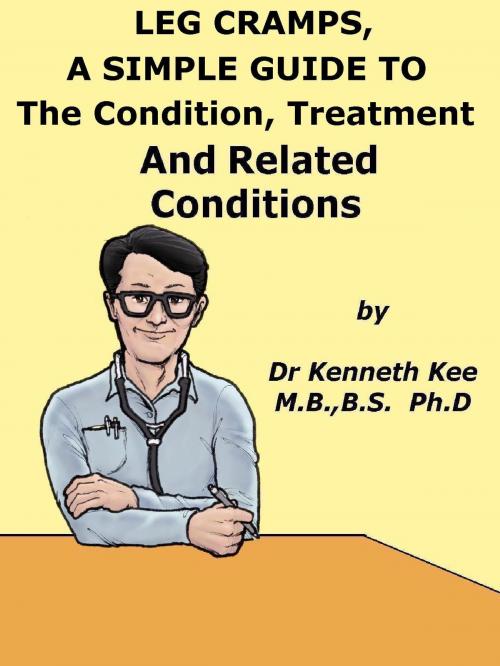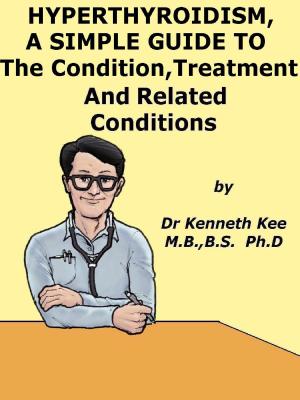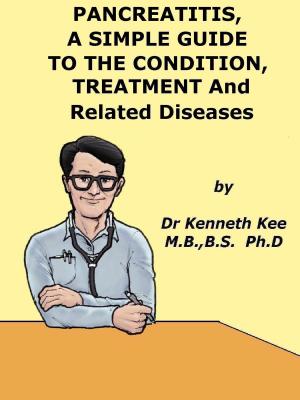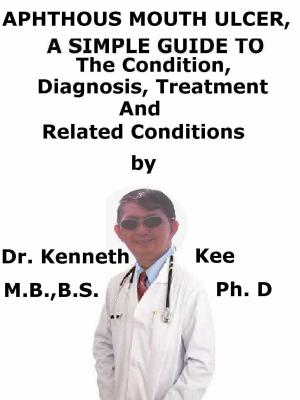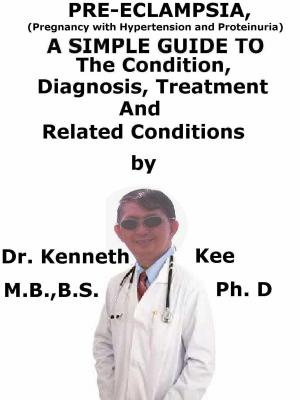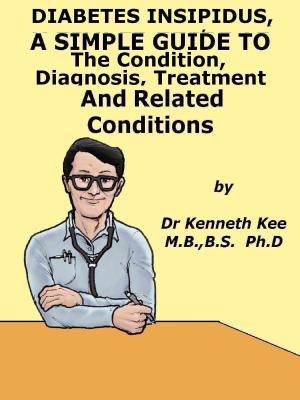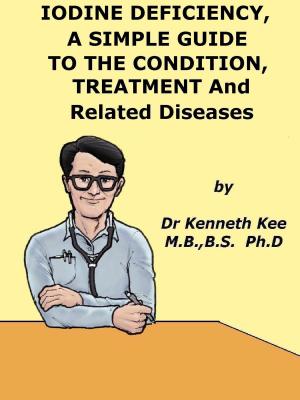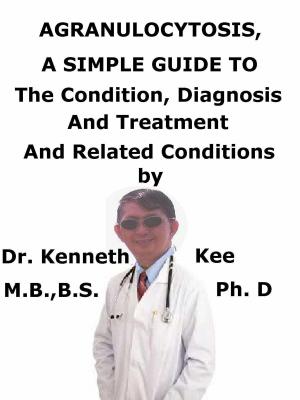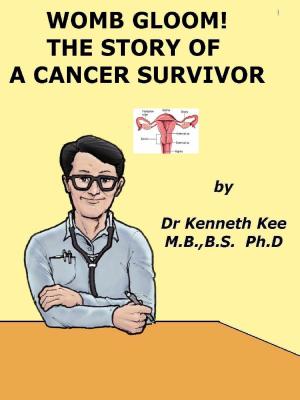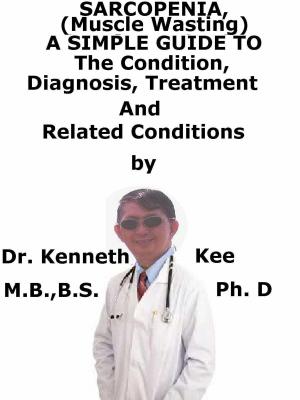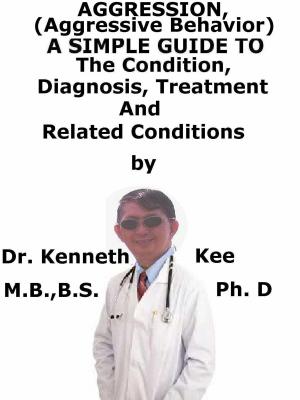Leg Cramps, A Simple Guide to The Condition, Treatment And Related Conditions
Nonfiction, Health & Well Being, Health, Ailments & Diseases, Musculoskeletal, Medical, Specialties, Orthopedics| Author: | Kenneth Kee | ISBN: | 9781310847462 |
| Publisher: | Kenneth Kee | Publication: | January 18, 2015 |
| Imprint: | Smashwords Edition | Language: | English |
| Author: | Kenneth Kee |
| ISBN: | 9781310847462 |
| Publisher: | Kenneth Kee |
| Publication: | January 18, 2015 |
| Imprint: | Smashwords Edition |
| Language: | English |
Leg Cramps are unpleasant often painful sensations
Often caused by muscle over-shortening and contractions
The causes may be muscle fatigue or low potassium
Other causes are low sodium or low magnesium
They usually occur in a calf muscle below and behind a knee.
The muscle cramp pain typically lasts a few minutes
Lactic acid builds up around the muscles to trigger the cramps
Muscle soreness may remain even after the cramp itself ends
These cramps are more common in older women and men.
They also occur during pregnancy in women
Leg cramps can also be caused by certain medication
Disturbance in sleep can cause it to be a distressing condition
Treatment is by stretching the muscle and rehydration
Adequate fluids and replacement salts are one solution
Regular muscle stretching is another way of prevention
If not, use Quinine tablet for fast treatment of condition
-An original poem by Kenneth Kee
Interesting Tips about the Leg Cramps
A Healthy Lifestyle
-
Take a well Balanced Diet
-
Treatment of a leg cramp:
Stretching and drinking plenty of fluids such as water may be helpful in treating simple muscle cramps.
With exertional heat cramps due to electrolyte abnormalities (primarily sodium loss and not calcium, magnesium, and potassium) appropriate fluids and sufficient salt improves symptoms.
Quinine is likely to be effective.
However, due to side effects its use should only be considered if other treatments have failed and in light of these concerns.
Vitamin B complex, naftidrofuryl, lidocaine, and calcium channel blockers may be effective for muscle cramps.
Research has also shown that pickle juice can be an effective remedy based on its high sodium and electrolyte content.
- Keep bones and body strong
Bone marrow produces our blood
Eat foods rich in calcium like yogurt, cheese, milk, and dark green vegetables.
Eat foods rich in Vitamin D, like eggs, fatty fish, cereal, and fortified milk.
Eat food rich in Vitamins B and C such as green vegetables and fruits
Zinc and other minerals are important to the body
- Get enough rest and Sleep
Avoid stress and tension
- Exercise and stay active.
It is best to do weight-bearing exercise such as walking, jogging, stair climbing, dancing, or lifting weights for 2½ hours a week.
One way to do this is to be active 30 minutes a day at least 5 days a week.
Begin slowly especially if a person has not been active.
- Do not drink more than 2 alcohol drinks a day for a man or 1 alcohol drink a day for a woman.
Alcohol use also increases the chance of falling and breaking a bone.
Alcohol can affect the neurons and brain cells.
- Stop or do not begin smoking.
It also interferes with blood supply and healing.
Chapter 1
Leg Cramps
Leg Cramps are unpleasant often painful sensations caused by muscle contraction or over shortening.
Common causes of skeletal muscle cramps may include muscle fatigue, low sodium, low potassium or low magnesium
Skeletal muscle cramps
Skeletal muscles can be voluntarily controlled.
Skeletal muscles that cramp the most often are the calves, thighs and arches of the foot.
This kind of cramp is associated with strenuous activity and can be intensely painful though skeletal cramps can occur while relaxing.
Around 40% of people who experience skeletal cramps are likely to endure extreme muscle pain, and may be unable to use the affected limb.
It may take up to seven days for the muscle to return to a pain-free state.
TABLE OF CONTENT
Introduction
1 Leg Cramps
2 Interesting Facts about Leg Cramps
3 Treatment of Leg Cramps
4 Low Potassium
5 Relaxant Effect of Magnesium
6 Peripheral Blood Vessels
7 Intermittent Claudication
Leg Cramps are unpleasant often painful sensations
Often caused by muscle over-shortening and contractions
The causes may be muscle fatigue or low potassium
Other causes are low sodium or low magnesium
They usually occur in a calf muscle below and behind a knee.
The muscle cramp pain typically lasts a few minutes
Lactic acid builds up around the muscles to trigger the cramps
Muscle soreness may remain even after the cramp itself ends
These cramps are more common in older women and men.
They also occur during pregnancy in women
Leg cramps can also be caused by certain medication
Disturbance in sleep can cause it to be a distressing condition
Treatment is by stretching the muscle and rehydration
Adequate fluids and replacement salts are one solution
Regular muscle stretching is another way of prevention
If not, use Quinine tablet for fast treatment of condition
-An original poem by Kenneth Kee
Interesting Tips about the Leg Cramps
A Healthy Lifestyle
-
Take a well Balanced Diet
-
Treatment of a leg cramp:
Stretching and drinking plenty of fluids such as water may be helpful in treating simple muscle cramps.
With exertional heat cramps due to electrolyte abnormalities (primarily sodium loss and not calcium, magnesium, and potassium) appropriate fluids and sufficient salt improves symptoms.
Quinine is likely to be effective.
However, due to side effects its use should only be considered if other treatments have failed and in light of these concerns.
Vitamin B complex, naftidrofuryl, lidocaine, and calcium channel blockers may be effective for muscle cramps.
Research has also shown that pickle juice can be an effective remedy based on its high sodium and electrolyte content.
- Keep bones and body strong
Bone marrow produces our blood
Eat foods rich in calcium like yogurt, cheese, milk, and dark green vegetables.
Eat foods rich in Vitamin D, like eggs, fatty fish, cereal, and fortified milk.
Eat food rich in Vitamins B and C such as green vegetables and fruits
Zinc and other minerals are important to the body
- Get enough rest and Sleep
Avoid stress and tension
- Exercise and stay active.
It is best to do weight-bearing exercise such as walking, jogging, stair climbing, dancing, or lifting weights for 2½ hours a week.
One way to do this is to be active 30 minutes a day at least 5 days a week.
Begin slowly especially if a person has not been active.
- Do not drink more than 2 alcohol drinks a day for a man or 1 alcohol drink a day for a woman.
Alcohol use also increases the chance of falling and breaking a bone.
Alcohol can affect the neurons and brain cells.
- Stop or do not begin smoking.
It also interferes with blood supply and healing.
Chapter 1
Leg Cramps
Leg Cramps are unpleasant often painful sensations caused by muscle contraction or over shortening.
Common causes of skeletal muscle cramps may include muscle fatigue, low sodium, low potassium or low magnesium
Skeletal muscle cramps
Skeletal muscles can be voluntarily controlled.
Skeletal muscles that cramp the most often are the calves, thighs and arches of the foot.
This kind of cramp is associated with strenuous activity and can be intensely painful though skeletal cramps can occur while relaxing.
Around 40% of people who experience skeletal cramps are likely to endure extreme muscle pain, and may be unable to use the affected limb.
It may take up to seven days for the muscle to return to a pain-free state.
TABLE OF CONTENT
Introduction
1 Leg Cramps
2 Interesting Facts about Leg Cramps
3 Treatment of Leg Cramps
4 Low Potassium
5 Relaxant Effect of Magnesium
6 Peripheral Blood Vessels
7 Intermittent Claudication
